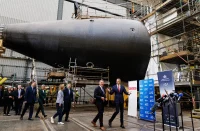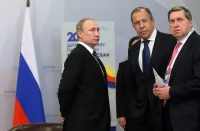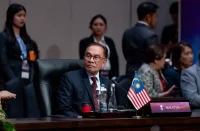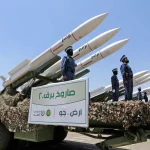By Rupakjyoti Borah (India)
In a significant development that went largely unnoticed, India agreed to speed up the mining of its rare earth reserves during the visit of its Prime Minister Manmohan Singh to Japan between October 24-26, 2010 for the annual bilateral summit. Rare earth materials find application in various niche areas like petroleum refining, wind turbines, fibre- optics transmission and missile-guidance systems. Though China leads the world in their production, currently supplying almost 97 per cent of the world’s output, India has the world’s fourth largest reserves of these materials. India’s move was also intended to deliver a not-too-subtle message to China that India and Japan would in future synergise their energies towards preventing the emergence of a China-dominated Asia. During this particular visit, India and Japan concluded a Comprehensive Economic Partnership Agreement (CEPA), agreed to speed up negotiations on a civil nuclear deal, simplified visa procedures, besides agreeing to work together to secure peace and stability in Asia.
China’s emergence as the second biggest economy in the world has not only had an impact on the Asian economy, but also on the balance of power in Asia. Buoyed by its booming foreign exchange reserves, China has adopted an increasingly belligerent posture in Asia, particularly towards Japan, with which it has had a fraught history. In the last few months, the relations between Japan and China have been marred by a series of unsavoury incidents.
When a Chinese trawler rammed into Japanese Coast Guard vessels near the disputed Senkaku islands on September 7, 2010, very few could have foreseen the diplomatic spat that ensued. China demanded that Japan release the trawler’s crew which it had taken into custody. Though Japan initially refused to do so, it did so later only to be met with a Chinese demand for a formal apology and compensation (which Japan refused). It was during this crisis that China unofficially declared a ban on the export of rare earth materials to Japan, sending a shiver down the spine of many Japanese companies which depend on Chinese rare-earth supplies.
Again, when North Korea shelled the South Korean island of Yeonpyeong on November 23, 2010, China refused to haul up the Hermit Kingdom, in spite of being the only country that has an influence on the recalcitrant North and its leaders. Of late, China has also been upgrading its weaponry. Recent media reports from China indicate that it has developed its first stealth fighter-the Chengdu J-20 fighter. It has also developed an anti-ship ballistic missile that could sink U.S. aircraft carriers and Japanese navy vessels. The newly-developed “D” version of China’s DF-21 medium-range missile could potentially change the balance of power in the Asia-Pacific.
It is not only Japan and the US that China has its crosshairs. During the recent visit of the Chinese Premier Wen Jiabao to India between December 15-17, 2010, he refused to address India’s core concerns-namely the disputed border, the issue of handing out stapled visas for people from the Indian province of Jammu and Kashmir who want to visit China and the issue of huge Chinese investments and presence in Pakistan-occupied Kashmir (PoK).
In fact, tensions were ratcheted up when some sections of the Chinese media questioned the rationale behind the Indian Prime Minister Manmohan Singh’s visit to Japan, Malaysia and Vietnam towards the end of October last year. An article in the People’s Daily on October 27, 2010 had quipped, “ Indian Prime Minister Manmohan Singh’s three-nation visit to Japan, Malaysia and Vietnam has been a media hype at home, being even described as a missionary trip to seek new strategic allies to deal with China, and to showcase India’s resolve to persist on its “Look East Policy” on its way to pursue the geopolitical and economic goals and achieve a “Big Power” status in the region, if not the leading power.”
India’s national psyche still bears the scars of 1962 when Chinese troops intruded into Indian territory, sparking off a border war. China has provided Pakistan with missile and nuclear technology, which is a major worry for India. India is also deeply troubled by China’s so-called “string of pearls” strategy where it has set up ports and facilities in Pakistan, Sri Lanka, Bangladesh and Myanmar, ostensibly to surround India.
Growing Convergence
Apart from the desire to prevent the emergence of a unipolar Asia, India and Japan share many other common interests. In the aftermath of the Second World War, Indian judge Justice Radha Binod Pal was the sole dissenting voice on the war crimes tribunal set up to try alleged Japanese war criminals, which Japanese remember with gratitude even today. However the two countries drifted away from each other as Japan moved closer to the US while India inched closer to the erstwhile Soviet Union. After the end of the Cold War and the demise of the Soviet Union, the ties took a turn for the better, especially when India liberalized its economy. However they nosedived once again when India conducted a series of nuclear tests in May 1998. Japan reacted strongly to the tests, suspending all political exchanges and economic assistance for nearly three years. However a turnaround in the damaged ties was achieved in August 2000, when the then Japanese Prime Minister Yoshiro Mori paid a visit to India.
Maritime cooperation is one of the most important areas of cooperation between India and Japan. The Indian Navy’s presence in the region between the Strait of Hormuz and the Strait of Malacca is formidable. In the post 9/11 period, it has participated in escort and joint patrolling activities in this region. The Indian Navy’s presence in the Andaman Sea gives it tremendous leverage over the sea lanes leading towards the Straits of Malacca. Conservative estimates suggest that an estimated 33 per cent of international trade and 50 per cent of the world’s oil pass through these sea lanes. For Japan, the Straits of Malacca are a virtual lifeline with nearly 90 per cent of Japan’s oil requirements being sourced from the Persian Gulf region. Given the rising incidents of pirate and terror attacks on shipping in this region, India’s importance for Japan is a given. On the economic front, India has been the largest recipient of Japanese Official Development Assistance (ODA) since 2003-2004 with the total Japanese ODA to India upto July 2010 being Yen 3.3 trillion.
The establishment of a “Strategic and Global Partnership” between India and Japan in December 2006 during the Indian Prime Minister’s visit to Japan marked a ramping up of the ties. His subsequent visit to Japan in October 2008 led to a “Joint Statement on the Advancement of the Strategic and Global Partnership and a Joint Declaration on Security Cooperation”. During the Japanese Prime Minister Yukio Hatoyama’s visit to India in December 2009, the two sides released a “Joint Statement on the New Stage of India-Japan Strategic and Global Partnership and an Action Plan to advance India-Japan Security Cooperation”. However, Indian officials were miffed when during this visit, he also conveyed that Japan expected India to join the United States and China to sign and ratify the CTBT at an early date.
When Yukio Hatoyama came to power in 2009, some Indian observers expressed misgivings regarding his foreign policy commitment towards India since India did not find a mention in his party- the Democratic Party of Japan’s (DPJ) election manifesto. However, such doubts were laid to rest when the Indian Defence Minister A.K. Antony visited Japan in November 2009. During this visit the two sides agreed to step up defence cooperation, which would include joint military exercises, bilateral and regional cooperation in peacekeeping and disaster relief.
After the NSG (Nuclear Suppliers Group) waiver granted to India in September 2008 and the conclusion of the Indo-US nuclear deal in October 2008, American and French companies have expressed their willingness to use Japanese-made equipment in nuclear power plants which they plan to set up in India. Already, during the visit of the French President Nicholas Sarkozy to India in early December 2010, an agreement was signed between the Nuclear Power Corporation of India Limited (NPCIL) and French energy-giant Areva for the construction of nuclear power plant (NPP) units at Jaitapur in India’s Maharashtra state. Earlier in June 2010, the Japanese Cabinet had adopted a new growth strategy, which included the promotion of the export of nuclear power generation facilities, an area in which Japanese companies have expertise.
The Way Forward
Japan and India indeed are natural allies with no negative historical baggage and no conflict of strategic interests. However, Japan’s wariness to conclude a civil nuclear deal with India has not been well-received in India, particularly when countries like the US, France and Russia have gone ahead and signed nuclear deals with India. India has an excellent non-proliferation record and has declared a voluntary moratorium on nuclear tests. The people-to-people contacts between India and Japan also demand attention. Like in the case of Indo-US ties, improving people-to-people ties would surely have a positive spillover effect on the bilateral ties. The studying of the Japanese language should be promoted in India and vice-versa. India meanwhile should not shy away from dealing with Japan, just because it may annoy China. As a rising Asian and world power, India needs to engage Japan and should not have any qualms in doing so.
Rupakjyoti Borah is a Senior Lecturer at the Department of Geopolitics and International Relations, Manipal University, Karnataka, India, he was also a Visiting Fellow at the Centre of International Studies, University of Cambridge in 2009, exclusive for ORIENTAL REVIEW. The views expressed are personal.














Japan’s efforts in supporting India’s multi-pronged development efforts for a stronger Asia received a major fillip since the announcement of India-Japan Global Partnership in year 2000. Both the nations have tried to supplement and complement each others efforts in varied socio-economic sectors as well and the best catalyst has been provided by the arrangement of alternative Prime Ministerial Visits between the two nations. This year in 2011 it is the turn of Japanese Prime Minister H.E. Kan Naoto to visit India and it is hoped that this visit will further take the Indo-Japan relationship to the next level.
Pingback: mera日本語 » Blog Archive » Joint effort by India and Japan in developing rare earth minerals
Pingback: Japan, the Persian Gulf and Energy – By George Friedman. « Constructive Society World News Review. (CS-R)
very very super